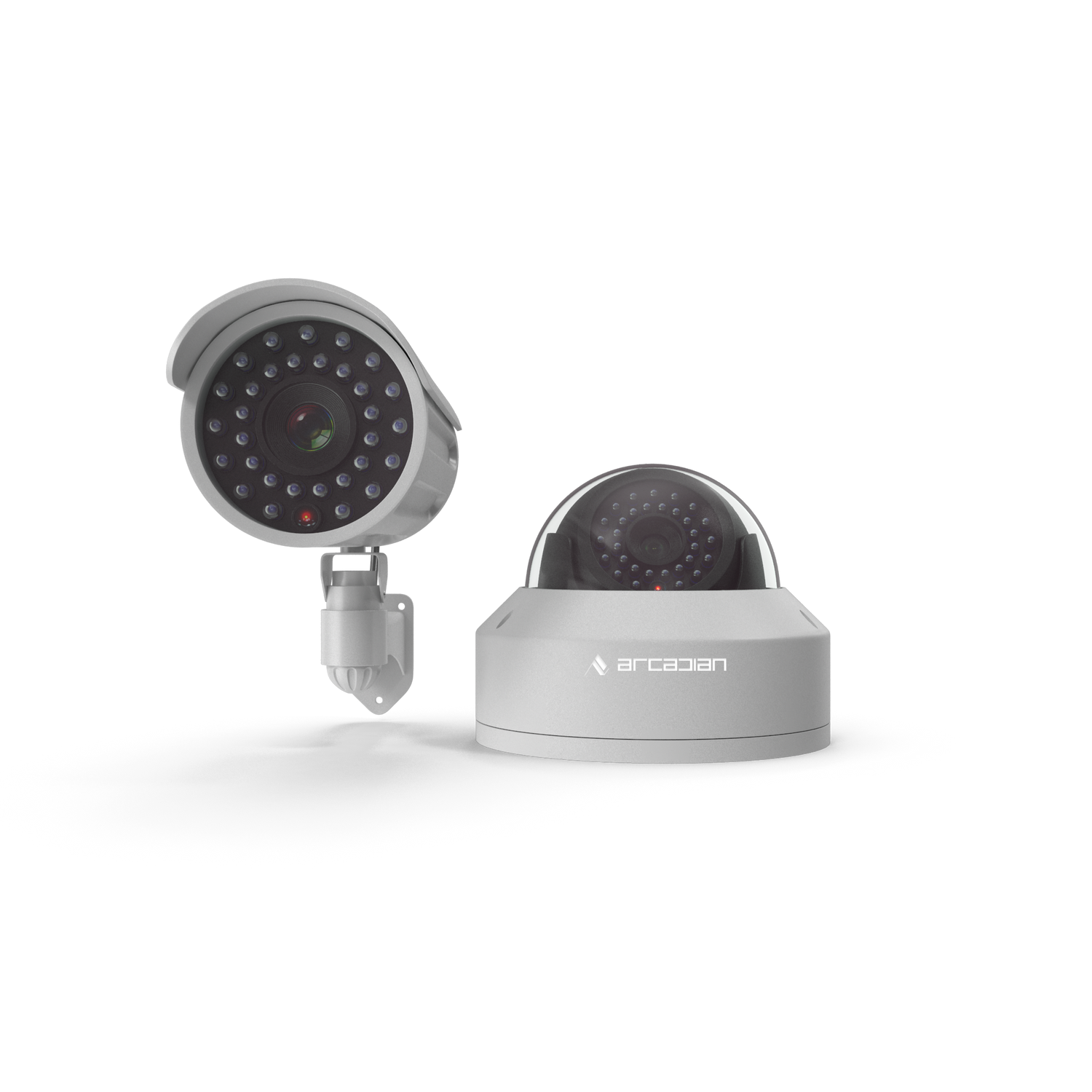The Profit Squeeze in Video Monitoring: How AI-as-a-Guard Helps Security Companies Reclaim Margins
Guard and monitoring firms are trapped between rising labor costs and client price wars. Here’s how AI-as-a-Guard transforms that pressure into profit.

- Background & Relevance: Why Now
- How Monitoring Companies Calculate Their Margins (And Why It’s Falling Apart)
- The Hidden Risks Monitoring Executives Should Worry About
- How Ranger Transforms Monitoring Economics
- Case-in-Point: From Loss to Profit
- What Guard Companies Should Learn from Monitoring Centers
- How Ranger Fits into Your Existing Stack
- Executive Checklist: 5 Questions for Every C-Level Leader
- Common Questions (FAQ)
- Security Glossary (2025 Edition)
- Conclusion & Call to Action
Introduction
In 2025, the video-monitoring and manned-guard industries are experiencing one of the harshest margin compressions in decades. Labor shortages, false-alarm overload, client price sensitivity, and hardware lock-ins have pushed profitability to the brink.
From Los Angeles to Toronto, monitoring centers report less than 12 percent net margin, and some guard companies have seen costs rise 25 percent year-over-year (Allied Universal 2024 Report).
ArcadianAI’s Ranger—the world’s first AI-as-a-Guard platform—offers a new route: lower OPEX, higher ROI, and instant scalability without more headcount. Unlike static VMS or closed VSaaS systems such as Verkada, Genetec, or Eagle Eye Networks, Ranger is camera-agnostic, software-first, and designed to turn false alarms into confirmed intelligence.
Quick Summary / Key Takeaways
-
Profit margins are shrinking under labor and client-price pressure.
-
False alarms consume up to 70 % of operators’ time.
-
Hardware-locked VSaaS models trap centers in high CAPEX.
-
Ranger reduces false positives 30–65 % and automates multi-camera validation.
-
AI-as-a-Guard converts cost centers into scalable revenue engines.
Background & Relevance: Why Now
According to MarketsandMarkets (2025), the global video-monitoring-as-a-service (VMaaS) market will reach $13.4 billion by 2028, yet profit per site is declining.
Why?
-
Labor Inflation: Guard wages in North America rose > 19 % since 2022.
-
Client Commoditization: B2B buyers shop on hourly rate, not quality.
-
Alarm Fatigue: An average monitoring operator handles > 300 alerts/hour (Frost & Sullivan).
-
Compliance & Liability: Missed incidents equal lawsuits and lost contracts.
In this race, survival depends not on more cameras—but on smarter ones.
How Monitoring Companies Calculate Their Margins (And Why It’s Falling Apart)
| Cost Driver | Typical Share of Revenue | Trend (2023–2025) | Pressure Point |
|---|---|---|---|
| Labor (OPEX) | 45 – 60 % | ↑ (+15–20 %) | Wages, turnover, training |
| Platform Licenses / VMS Fees | 10 – 15 % | ↑ | Closed ecosystems (VSaaS lock-in) |
| Bandwidth / Storage | 5 – 10 % | ↑ | Retention & compliance costs |
| False Alarm Handling | 20 – 25 % | ↑ | No AI filtering; operator fatigue |
| Margin (Profit) | 10 – 15 % | ↓ | Client price compression |
Traditional centers try to compete by lowering rates or adding cameras per operator—but every extra feed eats profit.
The Hidden Risks Monitoring Executives Should Worry About
1️⃣ False Alarms = Invisible Payroll Leak
Every 10 false alarms consume ~ 5 minutes of operator time. At $20/hour, a center handling 10,000 false alarms a month burns $16,000 of labor just acknowledging noise.
2️⃣ Hardware Lock-in = Strategic Risk
Proprietary VSaaS systems (Verkada, Rhombus, Nest Pro) bundle cameras + software but limit expansion to their ecosystem, forcing annual licenses even when margins collapse. Ranger is different—it works with Axis, Hanwha, Hikvision, and any ONVIF/RTSP feed.
3️⃣ Liability Exposure
Missed events due to operator fatigue lead to insurance claims and contract loss. AI confirmation adds auditable proof and reduces human error.
4️⃣ CAPEX vs OPEX Imbalance
Clients resist capital expenditure, preferring OPEX-based plans. Ranger’s hourly AI billing matches client cash flow and reseller profit models.
How Ranger Transforms Monitoring Economics
| Function | Legacy Approach | Ranger AI-as-a-Guard | ROI Impact |
|---|---|---|---|
| Alarm Filtering | Manual acknowledge per camera | Auto-correlation + context validation | –65 % false positives |
| Site Coverage | 1 operator ≈ 60 feeds | 1 operator ≈ 300 feeds | +400 % capacity |
| Integration | Limited (VMS-only) | Open API with Immix, RSPNDR, SureView & POS systems | Reduced integration cost |
| Pricing Model | Per-camera license | Per-hour AI usage | Match revenue to cost |
| Incident Evidence | Static clips | Multi-camera case timeline | Faster client reports |
[IMAGE: “AI control room filtering false alarms across multiple sites” – realistic 16 : 9 – alt="AI operator overseeing multi-site alerts filtered by ArcadianAI Ranger"]
Case-in-Point: From Loss to Profit
Scenario A – Traditional Center
-
100 sites × 10 cameras × 8 hr/day = 8,000 camera-hours
-
Human monitoring cost ≈ $35 per camera = $28 0 00 /mo
-
Revenue at $40 per camera = $32 0 00 → $4 000 profit (12 %)
Scenario B – With Ranger
-
AI processing $0.05/hr = $400 /site total ≈ $4 000 /mo for 100 sites
-
Operator cost drops by 40 % (– $11 200)
-
Center can serve 3× more sites with same staff → profit ≈ $22 000 (55 %)
Conclusion: Ranger turns the same labor budget into triple coverage and quadruple margin.
What Guard Companies Should Learn from Monitoring Centers
Physical guard providers face the same problem with different uniforms. An average guard earns $23/hr; clients pay $30–35/hr, leaving a thin $5–10 spread for overhead and profit. Deploying Ranger lets firms offer “hybrid guard + AI supervision” models—charging $25/hr with AI oversight and cutting on-site man-hours by half without reducing coverage.
That’s how Ranger becomes the force multiplier every CRO and COO has been looking for.
How Ranger Fits into Your Existing Stack
-
Plug-and-Play: Works with existing VMS (NDAA-compliant Axis Camera Station, Hanwha Wisenet, etc.).
-
Integrations: Immix, RSPNDR, SureView, RapidSOS, LightSpeed POS.
-
Open API: Allows guard companies to brand their own AI service.
-
Hourly Billing: Aligns with shift structures and contract variability.
-
Compliance: SOC-2, PIPEDA, GDPR, and NDAA aligned.
Executive Checklist: 5 Questions for Every C-Level Leader
1️⃣ Do we know how much false alarm handling costs per month?
2️⃣ Is our platform open or locked to one vendor?
3️⃣ Can we scale revenue without scaling headcount?
4️⃣ Are we charging for intelligence or just footage?
5️⃣ Have we tested AI-as-a-Guard on a pilot site?
If any answer is “no,” you’re leaving margin on the table.
Common Questions (FAQ)
Q1. Will AI replace operators or guards?
No. Ranger augments them by filtering noise and confirming incidents faster.
Q2. Can Ranger work with our existing cameras and NVRs?
Yes. Ranger is camera-agnostic and supports any ONVIF/RTSP feed.
Q3. Is data stored securely and compliantly?
Absolutely — AES-256 encryption on AWS; SOC-2 and GDPR aligned.
Q4. How fast can we deploy?
Within hours via Bridge device or cloud integration.
Q5. What’s the ROI window?
Most partners see payback within 30–45 days of deployment.
Security Glossary (2025 Edition)
AI-as-a-Guard • Alarm Fatigue • CAPEX/OPEX • False Positive • Guard Augmentation • Immix • Multi-Camera Correlation • NDAA • NVR • ONVIF • POS-Aware Analytics • RapidSOS • RSPNDR • SOC-2 • VSaaS • VMS • Video Analytics • Worker Fatigue • Zero-Trust Surveillance.
Conclusion & Call to Action
The race for contracts has become a race to the bottom. Labor costs rise, clients demand lower rates, and static platforms trap you in the middle. But AI-as-a-Guard changes the equation. Ranger lets you handle more sites with fewer resources, lower false positives by over 60 %, and create new revenue streams without capital expense.
See how Ranger can reclaim your margins → [Get a Free Demo]
Last updated: October 31, 2025

Security is like insurance—until you need it, you don’t think about it.
But when something goes wrong? Break-ins, theft, liability claims—suddenly, it’s all you think about.
ArcadianAI upgrades your security to the AI era—no new hardware, no sky-high costs, just smart protection that works.
→ Stop security incidents before they happen
→ Cut security costs without cutting corners
→ Run your business without the worry
Because the best security isn’t reactive—it’s proactive.







